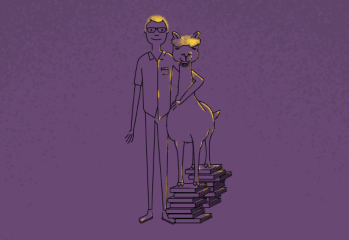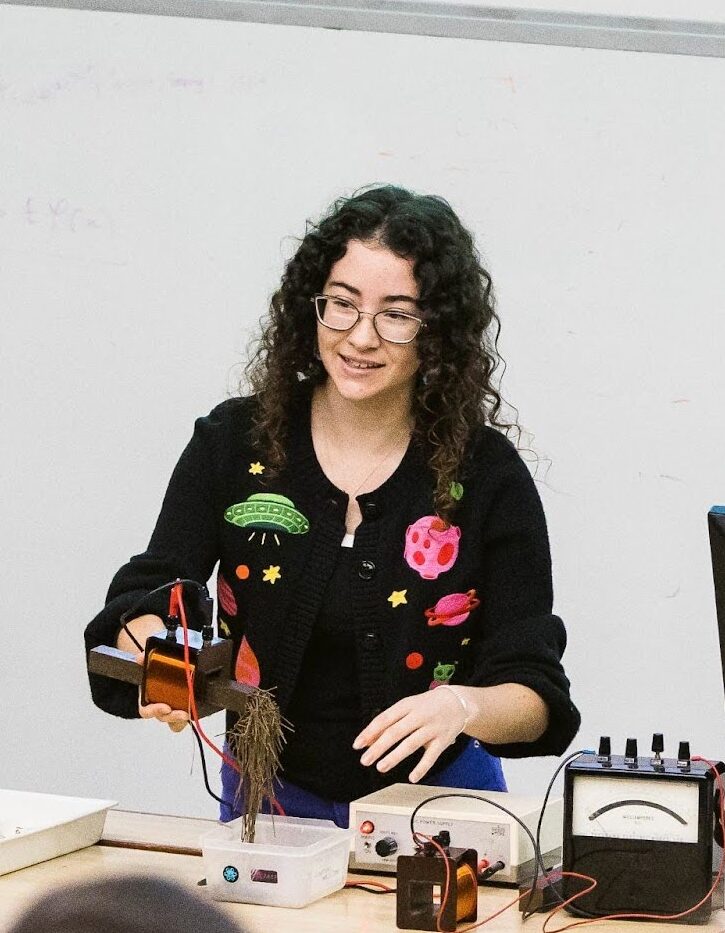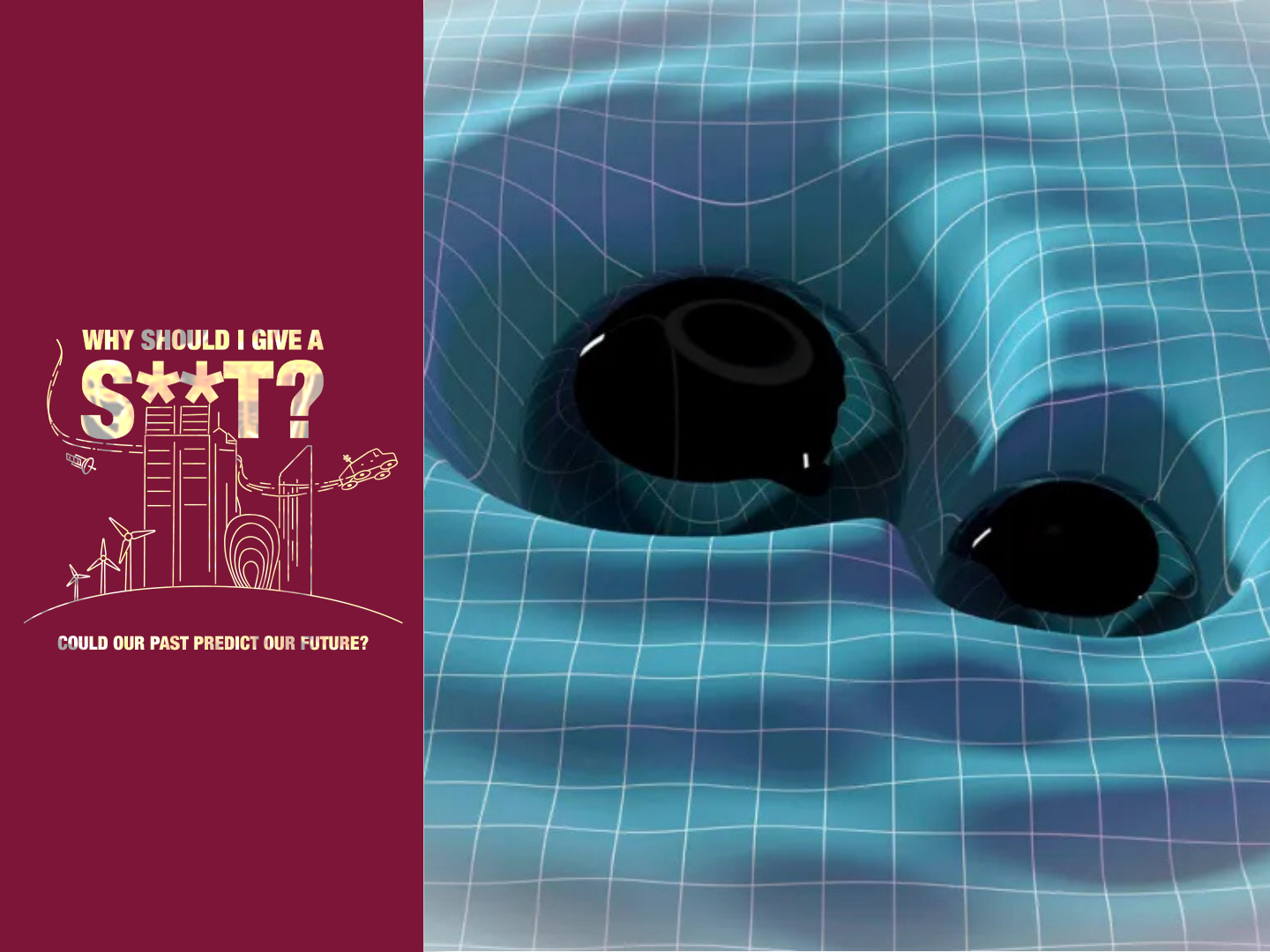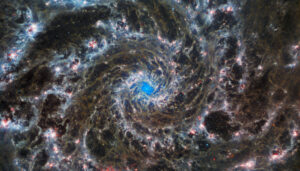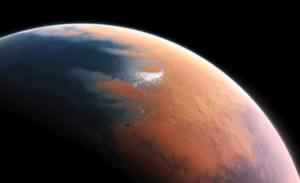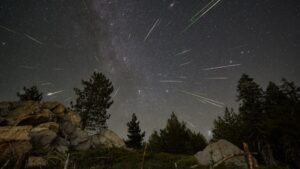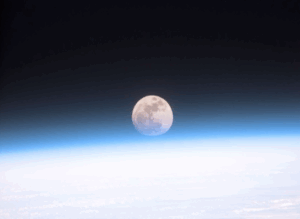In 2015, a piece of equipment at an observatory in the US moved one quintillionth (10-18) of a metre.
This tiny movement was the first recorded event of gravitational waves.
And it helped confirm Einstein’s theory of general relativity.
DEFINING GRAVITY
In 1916, Albert Einstein published his revolutionary theory of general relativity. It unravelled everything we thought we knew about gravity.
He theorised that gravity results from a curve in spacetime, the stretchy four-dimensional stage in which we exist – three dimensions of space and one of time.
Caption: Gravity is the result of curved spacetime from large solar masses
Credit: OpenStax University Physics, CC BY 4.0
Large masses like the Sun and Earth can curve and stretch spacetime.
Put a rock on a trampoline and a toy car on the edge. The car rolls towards the rock – just like people are pulled toward Earth’s centre.
Gravity isn’t a force, as we’d always thought. It’s the shape of the spacetime around us.
When an object with a high mass moves through spacetime, it carves out ripples – like a boat cutting through water.
Black holes and neutron stars are among the densest stellar objects. When they spin or collide, they create gravitational waves.
These waves spread out and travel through the universe.
Caption: An artists impression of two black holes spiralling towards each other, creating ripples in the fabric of spacetime
Credit: R. Hurt (Caltech-IPAC)
By the time gravitational waves reach us, they are so small that we need extremely sensitive equipment to detect them.
MEASURING SPACE
On a vast, open plain in the state of Washington in the US lies the world’s largest gravitational wave observatory.
It lives at the Laser Interferometer Gravitational-wave Observatory (LIGO).
Gravitational waves are measured with a device called an interferometer.
LIGO’s interferometer is a shed with two 4km perpendicular arms jutting out and uses lasers and mirrors to detect gravitational waves.
Caption: Diagram of an interferometer, including a laser, beam splitter, perpendicular arms and mirrors, and a detector (black dot)
Credit: Caltech/MIT/LIGO Lab
When a gravitational wave passes through the interferometer, ripples cause spacetime to stretch and shrink.
In September 2015, the arms on LIGO’s interferometer moved.
Somewhere in the universe, millions of light years away, two black holes had slammed into one another.
Their gravitational waves found the arms on the interferometer – the first recorded event of this kind and proof of Einstein’s theory of general relativity.
Caption: Aerial image of Virgo detector
Credit: The Virgo collaboration, CCO 1.0
SHARING SECRETS FROM ACROSS THE COSMOS
Gravitational wave research continues to uncover secrets of some of the most violent events in the universe, including the catastrophic collisions of black holes and neutron stars.
Researchers worldwide, including in Perth, are improving the sensitivity of the detectors.
One day, we might be able to observe smaller events like supernovae or the cosmic microwave background (remnants of the Big Bang).
These tiny messenger waves hurtle through space and help us understand our universe.
Knowing where we came from can help us predict where we’re headed.
